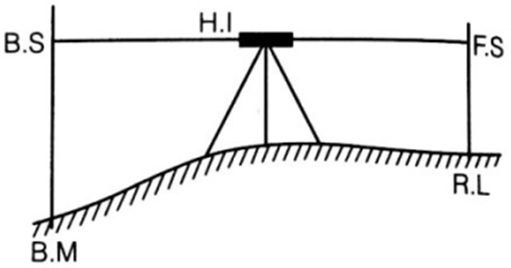Leveling is nothing but the process in which height of different objects available on earth surface are determined with reference to some known datum.
Some Basic definitions:-
(i) Reduced level: The elevation of a point with respect to either Mean Sea Level (MSL) or with respect to a fixed point of known height is called reduced level.
(ii) Bench mark: Bench mark is relatively permanent point of reference whose elevation with respect to some assumed datum is known. It is used either as a starting point for leveling or as a point upon which to close as a check.
Reciprocal Levelling
True Readings
Sensitiveness of Bubble Tube
Contouring
Methods of Levelling:
2. Rise and Fall Method:
Common sources of errors in levelling
Tabular example of leveling
(BOOKING) (REDUCTION)
|
|||||||
Station
|
remark
|
BS
|
IS
|
FS
|
Rise
|
Fall
|
RL
|
1
|
BM
|
||||||
1
|
A
|
||||||
1
|
B
|
||||||
2
|
B
|
||||||
2
|
C
|
||||||
2
|
D
|
||||||
2
|
E
|
||||||
3
|
E
|
||||||
3
|
F
|
||||||
3
|
BM
|
||||||
Sum
|
|||||||
Arithmetic checks (necessary for checking the reduction)
Σ (BS) - Σ (FS) =
Σ (RISES) – Σ (FALLS) = LAST (RL)
– FIRST (RL) =
Allowable
misclosure = ±5 √n mm ;
where n = no. of instrument positions
—


















0 Comments
For more Information Please Comment